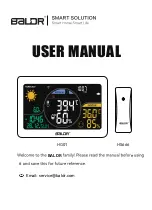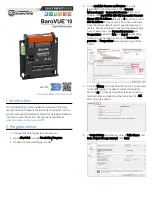
faq
Following are some frequently asked questions — and answers — regarding the installation
or operation of the Multi-Port docking Station.
Q:
Why can’t I make the Hi-Speed Multi-Port Docking Station the primary display?
A:
Some video card manufacturers include a utility that prevents other video cards from being
set as the primary card. Check the bottom- right corner taskbar for the utility, and disable
the utility before designating the Multi-Port docking Station as the primary display.
Q:
Why won’t my DVD player work when I move it over to the extended display?
A:
Some dVd playback software packages don’t support playing on a second display adapter
of any kind. You can try opening the program in the secondary display first before playing
the dVd.
Q:
Why won’t my video play on Media Player if I move it over to the extended desktop?
A:
Check that you’ve moved the Media Player window completely over to the second screen.
Q:
Why doesn’t my mouse move past the right side of the screen as it should on an
extended desktop?
A:
Check the display settings and make sure that your display No. 2 is on the right side of
display No. 1. you can rearrange how Windows treats displays in relation to each other in
display Properties/Settings.
Q:
Why are there are lines running horizontally up and down my screen?
A:
This is due to a low refresh rate setting. you can change this by going to display Properties/
Settings → Advanced Settings.
NOTE:
Make sure you select the USB 2.0 VGA device first
and not set the refresh rate higher than what your monitor can support, as this can damage
your monitor. you can also try to reset/refresh/resynchronize your monitor.
Q:
Why doesn’t Direct3D work?
A:
This is a current limitation of the Multi-Port docking Station. Check for driver updates in the
future to add support for this. If your application requires this, use the main display adapter.
oPEration tiPS
Following are some tips that may help if you are experiencing any difficulties using the
Multi-
Port docking Station. Contact your dealer for additional assistance, if needed.
• Check to make sure that all connectors are plugged in correctly.
• Make sure that the USB port that you are using is USB 2.0.
• Try a different USB 2.0 port and/or computer.
• Check to see that the monitor is connected correctly and the power is on.
• Try connecting the adapter directly to the computer instead of through a hub.
• Unplug all other USB devices from the system.
• Make sure to restart your computer after the driver installation.
• Unplug the adapter and re-insert it.
• Check the Web site to make sure you have the latest drivers.
• Reset/refresh/resynchronize your monitor.
• Selecting Primary mode may disable the main system display on certain Intel graphics
solution-based computer systems.
• If you have problems during the boot-up process, start your computer in Safe mode and
uninstall the driver. Hold the CTRl key until the Windows startup menu appears and select
“Safe Mode.”
14
FAQ / TIPS

































